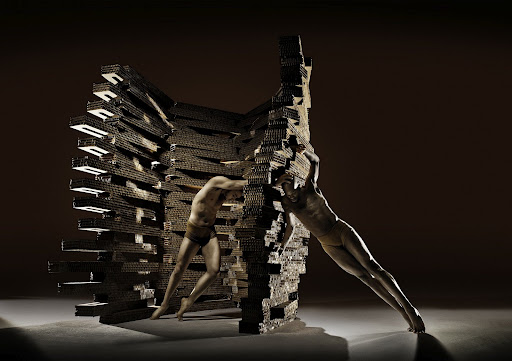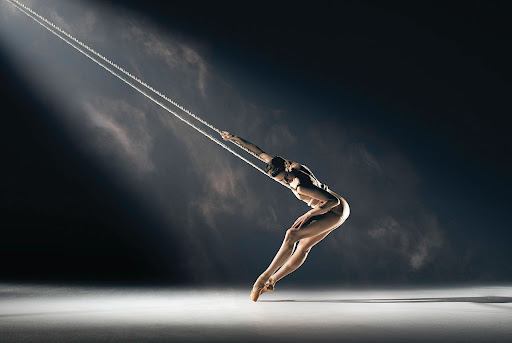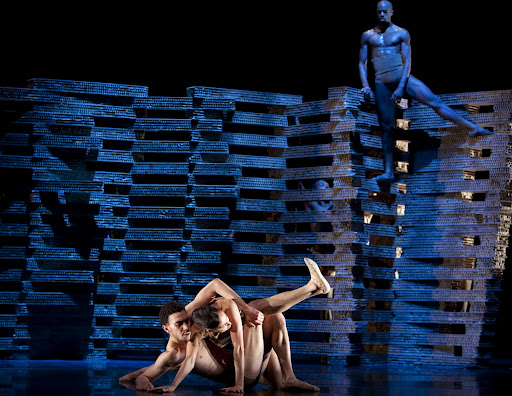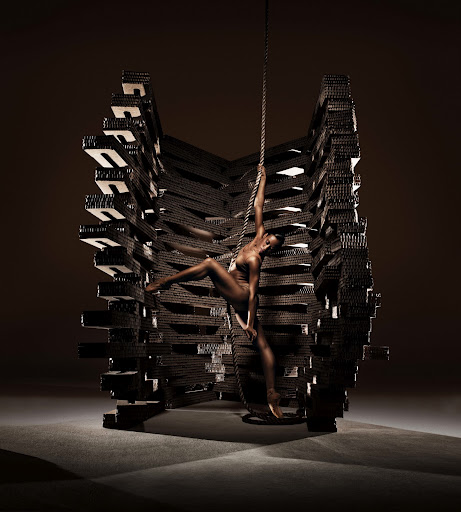BY LUCIA CHUNG
Triangle of the Squinches, which premiered in April 2011, is a dazzling work that blurs the lines between human and object, the artificial and the organic. A collaboration by legendary choreographer Alonzo King, architect Christopher Haas and the Grateful Dead’s Mickey Hart, the atmospheric space that Triangle of the Squinches creates is one that enthralls.
Driven at its core by the relentless, pulsating energy of King’s dancers, this ballet is one in which each aspect of the performance blends into the other: movement, sound and structure become one seamless tableau. Haas’s two sets–a screen made of elastic strings and a folding wall composed of slabs of recycled cardboard–alternatively elevate and ground the movement in the piece, restricting and enhancing the dancers’ range of motion. The strings dance, vibrate and twang when snapped, while the cardboard structure opens and folds, and shuffles as it rolls across the stage. Both of these innovative sets have fluidity, and are used in ways that will surprise and charm.
Hart’s music is at once cosmic and earthbound, making use of the entrancing sounds of the rainforest, the cosmos (for example sounds of Jupiter’s magnetosphere or a star drone), the heartbeat and the human voice. Of course, music itself has always been an impetus to movement (or the lack thereof), and its impact is palpable in this piece. Absolute silence was used with maximum effect, as it allowed the dancers’ movements to become completely audible. The silence also impacted the audience, in that it prevented us from moving: Julia Glosemeyer, who watched the ballet with me, remarked that she’s always afraid to move during those moments, lest she make a sound. During moments where the driving beat of drums was present, a feeling of momentum and infectious primal energy would inhabit the dancers’ movements, and rouse the audience as well. The music in Triangle of the Squinches is as alive as Haas’s sets.
And of course, at the center of it all, we have the dancers. They can be as whip-like and flexible as the curtain of elastic strings, or become solid, interlocking structures. Their breathing becomes part of the soundscape, as do their footfalls. Their movements always seem larger than life and unchoreographed, as if they’re channeling something bigger than themselves. King’s continuous exploration of human limits once again seems to reach the same conclusion–there are none.
You can still catch Triangle of Squinches this weekend, as it plays at the Yerba Buena Novellus Theater from April 12-15. The second half of the spring program, which runs from April 18-22, features King’s other landmark work and collaboration with Zakir Hussain, Scheherazade. Both are well worth seeing.
RELATED LINKS
Novellus Theater @ YBCA Ticketing Site
Follow us on Twitter and like us on Facebook to give us a shout. You can also stay on top of exciting events from around the world by downloading the eventseeker app for iPhone, Android or Windows.




